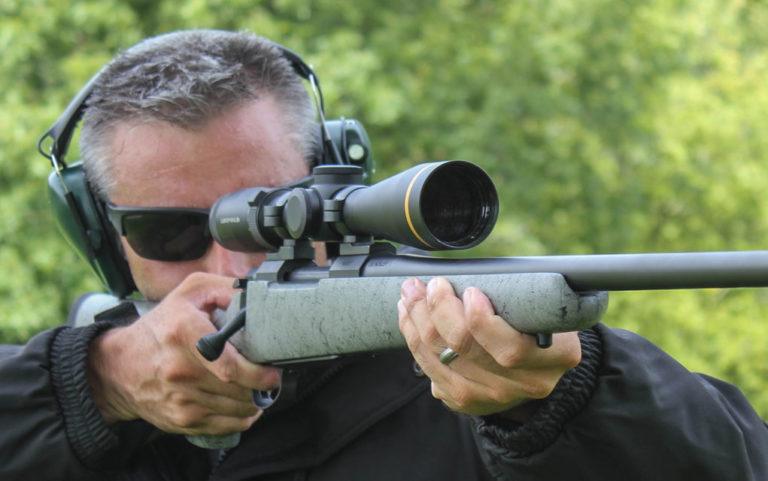
What are AR lens coatings, why are red dots parallax-free, and is a $2,000 scope really better than a $200 scope? Here’s a rundown of why some riflescopes and reflex optics work better — and cost more — than others.
What are some things to know about riflescopes and other optics?
- The basic construction is a main body tube, objective bell, ocular bell and lenses.
- The reticle can be placed forward (first focal plane) or rearward (second focal plane).
- There are a variety of different lens coatings available that do different things.
- Scopes that cost more generally do for a good reason.
- There are three different types of non-magnified dot sights; know their differences.
The first primitive riflescopes were constructed in the mid-19th century and found their way onto sniper rifles during the American Civil War, but it wasn’t until the mid-20th century that optics became commonplace on civilian hunting firearms.
By the 1970s scopes started outnumbering iron sights on hunting rifles, and by the 1990s most rifle makers produced only a handful of rifle models that even wore iron sights — usually brush guns or big-bore dangerous game rifles. Today, it’s rare to even see a new bolt gun that bears irons, but I can’t name one production rifle that doesn’t come with a receiver that is drilled and tapped, or machined with integral scope bases.
Not only have riflescopes become more popular, they’ve also become better. Far better. Optics technology has increased at a frenetic pace, and modern red-dots, reflex sights and scopes are significantly improved over models that were being released just a few decades ago.
But what, exactly, has gotten better with riflescopes?
 Riflescopes 101
Riflescopes 101
To understand how scopes have improved, you must first understand how they are constructed. Riflescopes utilize a main body tube that’s invariably constructed from anodized aircraft-grade aluminum, which is lighter that the steel previously used. There’s an objective bell located at the bow of the scope, an ocular bell at the stern, and inside each of those bells is a lens of the same name.
Within the main body tube are additional lenses and prisms, and a reticle that can be adjusted for windage (to impact farther left or farther right) and elevation (up-and-down impact adjustments). Light enters the objective lens, travels through the main body tube and the network of lenses and prisms held within, and reaches your eye with an image of the reticle superimposed on the aiming point to give you some notion of where your bullet is going to go.
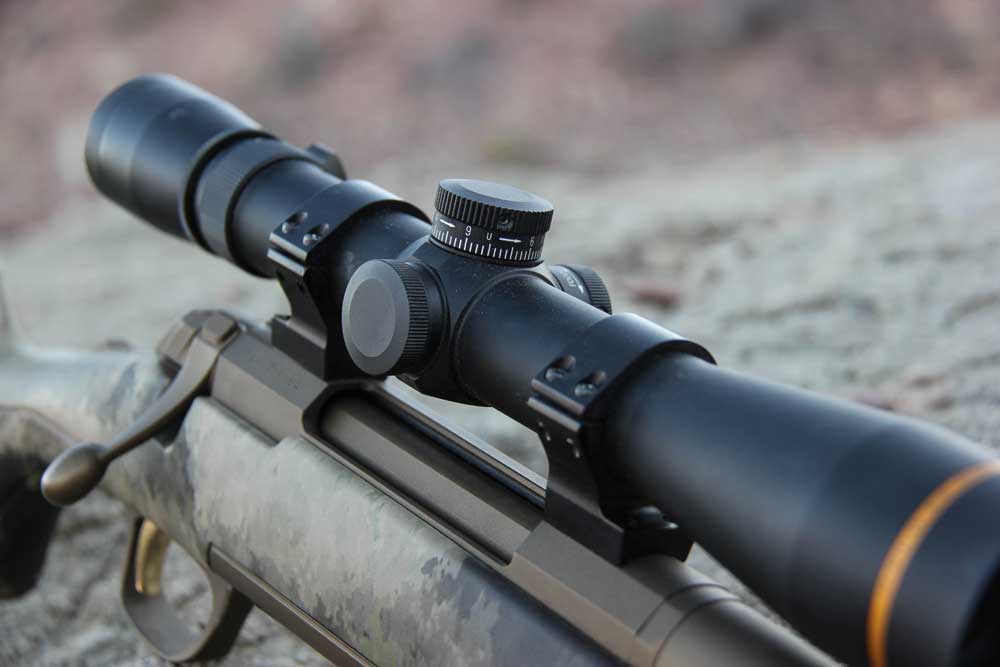 Reticle Location
Reticle Location
The reticle can be located on the front of the erector tube — also known as front focal plane — or the rear/second focal plane. Until very recently, rear focal plane scopes were the standard, but long-range shooting has prompted more companies to add a front focal plane reticle.
What’s the advantage? In first focal plane scopes, the size of the reticle changes with magnification. Zoom to 10x and the size of the reticle increases. Zoom to 3x and the reticle seems to shrink. This offers two advantages: First, you can accurately range objects using a known standard at any range and magnification, and secondly, elevation and windage adjustments remain consistent across the magnification range. If you stopped reading mid-sentence on the last part, then a second focal plane is probably what you’re looking for. Unless you’re planning to do some very dedicated long-range shooting, a second focal plane scope works just fine.
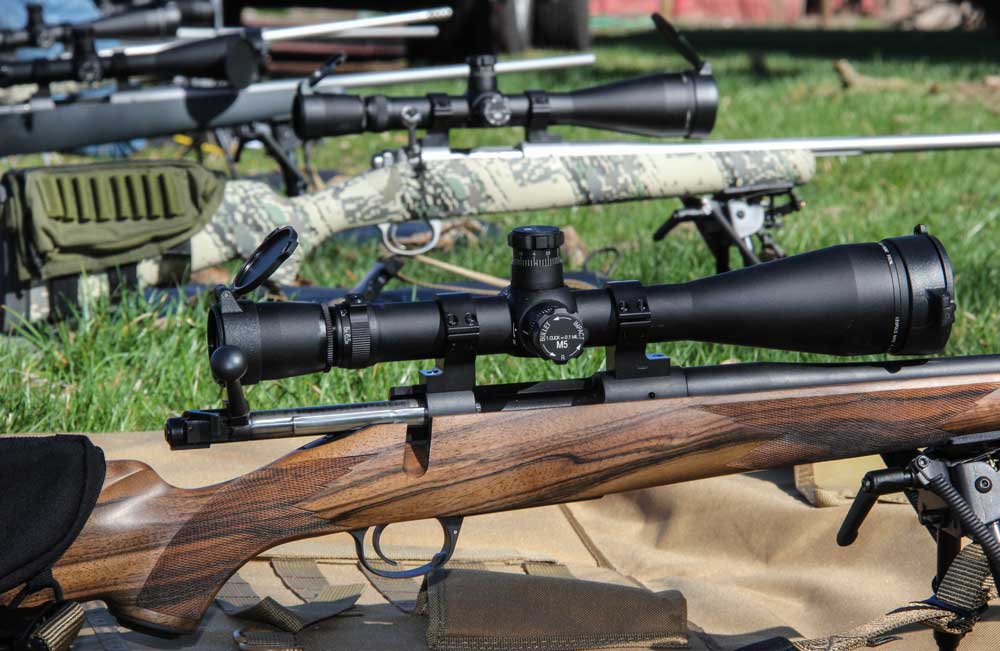
Main Tube Diameters
Scope tubes have traditionally been 1 inch in this country, although European scope makers favored a larger 30mm tube. Now, 30mm scopes are trending on this side of the Atlantic, and they do offer a greater adjustment range for long-distance shooting and, perhaps, transmit a bit more light. Speaking of light transmission, it’s important to answer a few questions about the topic and clear up some “dark” areas.
Light Transmission
For starters, there’s no such thing as 100 percent light transmission unless you use an ice pick to clear out the guts of your scope. Light traveling through the various lenses in your scope is absorbed or reflected and — at least a small portion — is lost at each lens. Light that’s reflected does not reach the eye, bouncing around in the main tube. Under low-light conditions, you might not be able to see an animal or target if your scope is reflecting too much light.
Aside from light transmission, many scope companies use lenses that manage light (Leupold’s Twilight Max Light Management System is one example). This technology not only allows for maximum light transmission, but it also manages light so that images are crisp and clear.
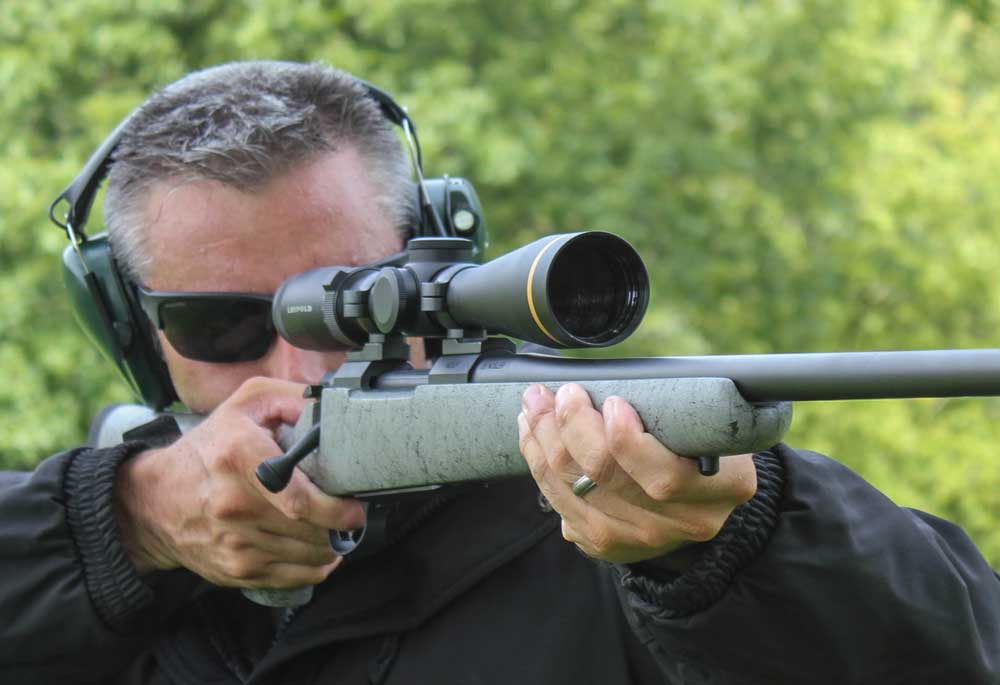 Lens Coatings
Lens Coatings
The primary way that scope makers accomplish maximum light transmission is via the use of lens coatings that reduce reflection. This technology has improved, become more commonplace and more widely available — meaning that affordable scopes now transmit more light than more expensive models did a few decades ago thanks in part to AR (anti-reflective) coatings that transmit more light to the shooter.
Lens coating serve a variety of functions besides their anti-reflective duties; they protect against lens abrasions from grit and debris, and some hydrophobic lenses cause water droplets to bead so that they don’t affect the image, an obvious advantage in wet weather. The number and quality of lens coatings affects overall performance — and scope price. Additionally, most modern scopes are filled with inert gases like nitrogen that prevent moisture from entering the scope and fogging the optic.
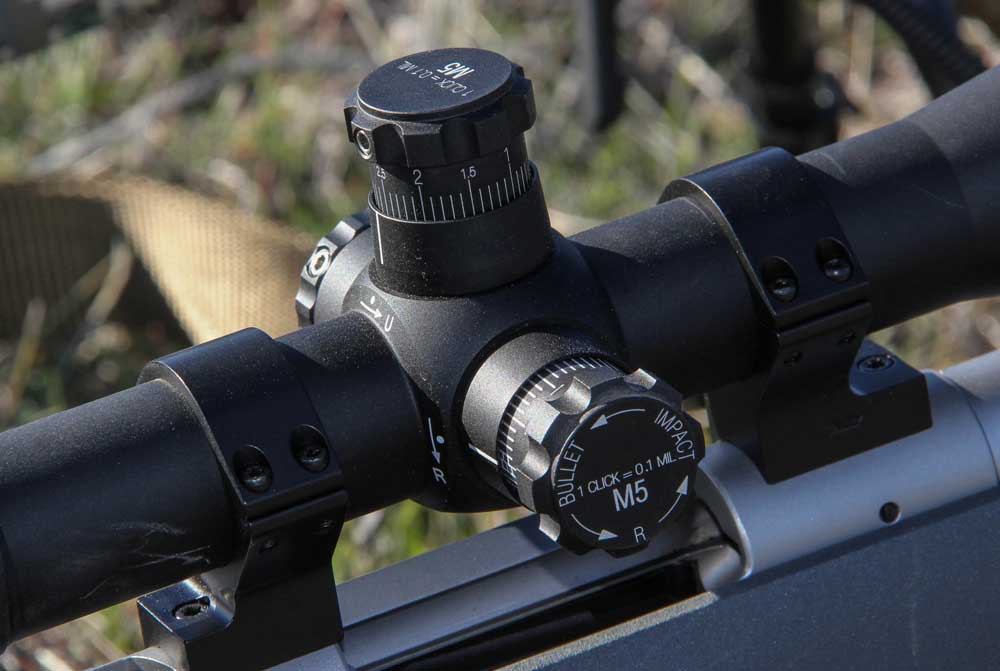
Adjustability
Adjusting the erector tube allows the shooter to adjust for elevation and windage, and this is done via the turrets on the top and side of the scope. The turrets act like screws and move the erector tube up, down, left and right. Each “click” of the turret moves the point of impact about one-quarter of an inch (1/4 MOA) for most riflescopes — at least in theory.
In truth, the complex inner workings of the scopes and all the “geegaws” that go into proper adjustment don’t always give the end result desired. Some scopes have turrets that move more than a quarter-inch per click, some less. Proper adjustments are beneficial when sighting in a scope, but they’re absolutely essential when adjusting an elevation turret to strike an object that’s a half-mile or more away.
Why Some Scopes Cost More Than Others
If the internal structures of most scopes are similar in overall construction, then why do some scopes cost $150 and others cost $3,000? Fair question.
For starters, more expensive scopes tend to have more robust hardware with more precise adjustments and better lens coatings, though I’ve witnessed expensive scopes fail and I’ve seen cheap scopes withstand terrible abuse and still function flawlessly. The real difference, though, is the quality of the glass. Better glass is clearer, ground more precisely, and it offers a better view in low-light conditions because more light travels through the glass and reaches the eye.
 I got a very clear demonstration of this on my first trip to Africa a decade ago. At night the pans (ponds or lakes) near camping areas in Etosha Park in Namibia are illuminated with floodlights so that visitors can witness lions, cheetahs, rhinos, elephants and a variety of other game coming to drink. It was just before midnight and I was at the pan watching a pair of jackals wrestling at the water’s edge when a group of Austrian tourists came and sat a few feet away. All week I’d been watching game through the $200 binoculars I brought along, and one of the Austrians lent me his Swarovskis. The difference in the images was astounding. The Swarovskis provided a very clear, crisp image — so much so that I remember seeing individual hairs on one of the jackals’ raised hackles.
I got a very clear demonstration of this on my first trip to Africa a decade ago. At night the pans (ponds or lakes) near camping areas in Etosha Park in Namibia are illuminated with floodlights so that visitors can witness lions, cheetahs, rhinos, elephants and a variety of other game coming to drink. It was just before midnight and I was at the pan watching a pair of jackals wrestling at the water’s edge when a group of Austrian tourists came and sat a few feet away. All week I’d been watching game through the $200 binoculars I brought along, and one of the Austrians lent me his Swarovskis. The difference in the images was astounding. The Swarovskis provided a very clear, crisp image — so much so that I remember seeing individual hairs on one of the jackals’ raised hackles.
Would you be willing to pay an extra $1,000 for that kind of clarity? That’s up to you. But expensive scopes use expensive glass, and that extra detail can make a difference. It might help you identify an errant branch that would deflect your bullet or take the shot of a lifetime on the edge of darkness — a shot you might not get with cheaper optics with lesser glass.
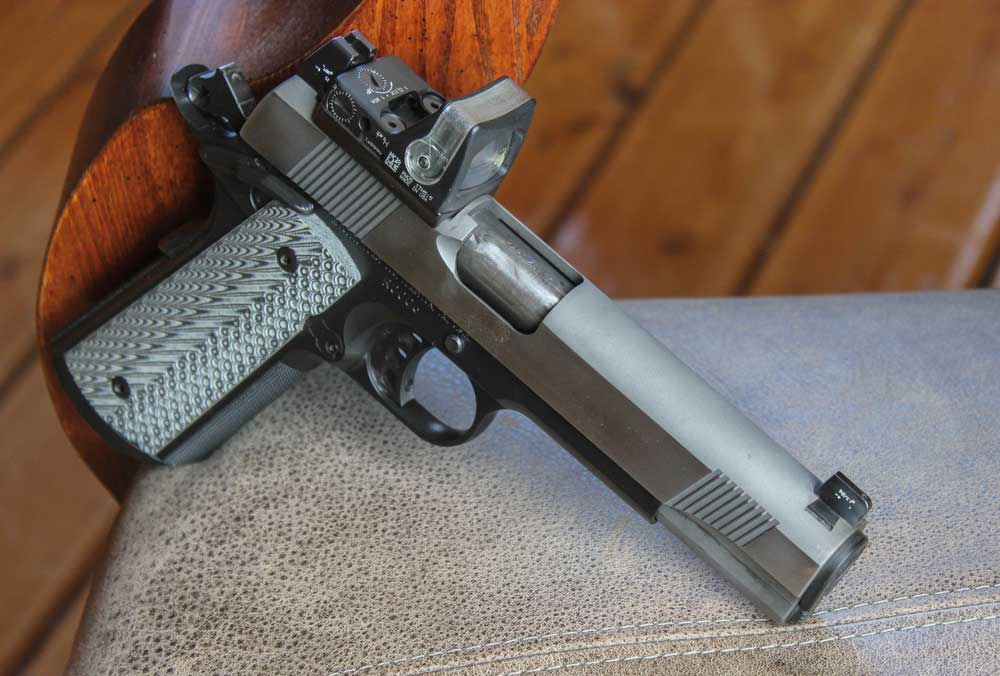
Non-Magnified Dot Sights
The rise in popularity of modern sporting rifles has no doubt led to an increase in the popularity of non-magnified optics, so let’s examine their effectiveness and purpose.
For starters, we’ll need a classification system for these optics because the traditional term “red-dot” can be confusing (especially since there are now multiple aiming point colors from which to choose).
The most common type of “red-dot” is a reflex sight, which uses a projected image (usually via LED) on a piece of glass to serve as an aiming point.
Prismatic optics offer a similar sight layout with a slightly different design; the reticle is etched on the glass itself and the prism acts as a lens in a scope to flip the image so that it appears right-side-up to the shooter.
Holographic sights use an image of the reticle captured within layers of glass.
 Which style you choose is largely a matter of personal taste. If you want the option of magnification, a holographic sight is best, but other than that, all three of these sights will serve you well. They’re great for defensive work, but they’re also effective for hunting game, especially in low-light conditions. Non-magnified red-dots make it easy to keep both eyes open for increased awareness, and they’re surprisingly accurate out to several hundred yards.
Which style you choose is largely a matter of personal taste. If you want the option of magnification, a holographic sight is best, but other than that, all three of these sights will serve you well. They’re great for defensive work, but they’re also effective for hunting game, especially in low-light conditions. Non-magnified red-dots make it easy to keep both eyes open for increased awareness, and they’re surprisingly accurate out to several hundred yards.
Additionally, these sights are light and rugged because they don’t require the number of lenses found on a traditional magnified optic. And non-magnified dots appear on the same focal plane as the target does, so there’s no worrying about parallax error. For close-range shooting, especially at fast-moving targets, these types of optics are ideal. They also work well for most hunting situations, too; I used an EOTech 512 holographic sight on a Mossberg rifle for an elk hunt in Montana and it proved to be an effective combination, especially when paired with a magnifier that allowed for improved versatility.
Editor's Note: This article is an excerpt from the Winter 2017 issue of Gun Digest the Magazine.

Next Step: Get your FREE Printable Target Pack
Enhance your shooting precision with our 62 MOA Targets, perfect for rifles and handguns. Crafted in collaboration with Storm Tactical for accuracy and versatility.
Subscribe to the Gun Digest email newsletter and get your downloadable target pack sent straight to your inbox. Stay updated with the latest firearms info in the industry.

![Best Concealed Carry Guns In 2025 [Field Tested] Wilson Combat EDC X9S 1](https://gundigest.com/wp-content/uploads/Wilson-Combat-EDC-X9S-1-324x160.jpg)


![Best 9mm Carbine: Affordable PCCs [Tested] Ruger Carbine Shooting](https://gundigest.com/wp-content/uploads/Ruger-Carbine-Shooting-100x70.jpg)
![Best AR-15: Top Options Available Today [Field Tested] Harrington and Richardson PSA XM177E2 feature](https://gundigest.com/wp-content/uploads/Harrington-and-Richardson-PSA-XM177E2-feature-100x70.jpg)

Your experience from a decade ago is irrelevant. All scopes have improved over the last ten years and today a less expensive scope than a Swarovski may be just as good as it was 10 years ago. I have had good luck with Nikon and have a variety of them on various rifles.
Thanks for this, one of the best Scope I have chose, Before i bought from other source but not too much perfect!
https://10rangefinders.com/best-thermal-scope/